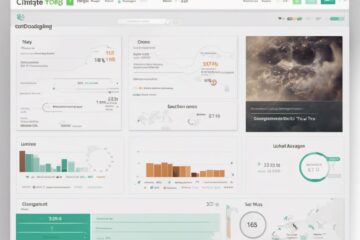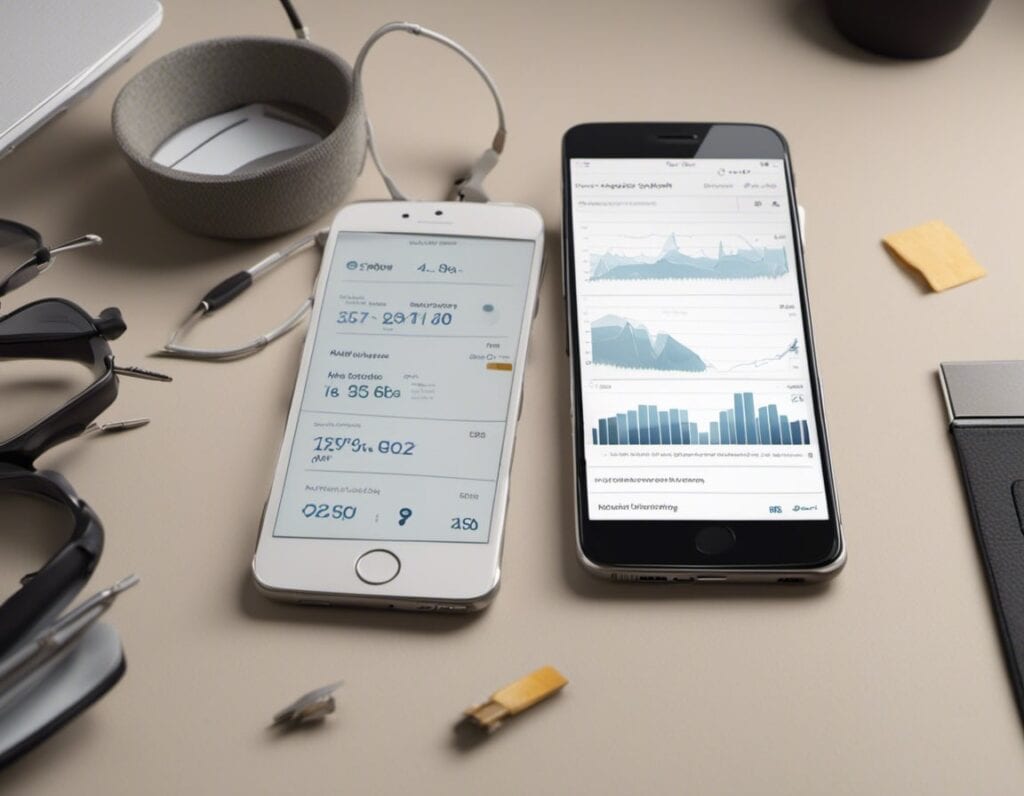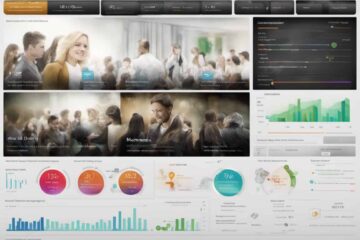Crowdfunding has become a powerful tool in the digital age, connecting individuals and organizations with a global audience eager to support. Your choice of crowdfunding platform is crucial, as it sets the course for your fundraising journey.
This blog will help you navigate this complex landscape and make an informed decision that suits your fundraising objectives.
The Rise of Crowdfunding
Crowdfunding’s roots stretch back to the early 1700s, but it’s the advent of the internet that truly fueled its explosive growth, elevating it to a multi-billion-dollar industry.
The transformation of an idea into a global phenomenon has created a labyrinth of options, but what are the repercussions of this expansion on your project?
When considering the rich tapestry of crowdfunding history, it’s paramount to evaluate how each online space has evolved, adapted, and sculpted its niche. The comprehension of this evolution will equip you with the insight to align your project with a crowdfunding platform that resonates with your objectives and maximizes your outreach.
Clarifying Your Campaign Goals
Before embarking on this journey, it’s essential to introspect and crystallize your campaign’s goals. Are you igniting the flames of philanthropy, spearheading a groundbreaking product launch, or fueling a personal dream?
Each digital space serves as a different beacon in the crowdfunding galaxy, illuminating specific paths and objectives.
By probing deeply into your motives and expectations, you weave a tapestry of clarity around your campaign, aligning its pulse with a crowdfunding platform that echoes its beat.
Each thread of introspection adds a layer of resilience to your project, reinforcing its foundations and preparing it to weather the storms of the crowdfunding journey.
Common Types of Crowdfunding Platforms
Explore the world of crowdfunding platforms, and you’ll find various types, each with its own unique setup.
By comparing these platform types to your project’s needs, you can choose the one that aligns best with your fundraising goals, setting the stage for success.
- Reward-Based Platforms: It’s the adrenaline of rewards that fuels the heartbeat of these crowdfunding platforms, enticing backers with tangible incentives. But, is the promise of rewards the catalyst your project needs to thrive?
- Donation-Based Platforms: Driven by the winds of altruism, these online spaces harbor campaigns that appeal to the inherent goodness of people. Does your campaign sail on the winds of benevolence and generosity?
- Equity Crowdfunding: Here, the soil is fertile for investors seeking to plant their money in exchange for shares. Can your project blossom in this environment, providing fruitful returns?
- Lending-Based Platforms: The ecosystem here is ripe for peer-to-peer loans, facilitating symbiotic relationships between borrowers and lenders. Is this the nurturing ground your project requires to flourish?
The Importance of Picking the Right Crowdfunding Website for Your Campaign
- Boosting Visibility and Trust: Having a groundbreaking idea is one thing, but ensuring it reaches the right people is another. The crowdfunding platform you choose can spotlight your offering, turning visibility into genuine interest and support.
- Establishing Credibility: A digital space with a solid reputation validates your campaign. Think of it as a trusted figure endorsing your initiative. When the online venue is trustworthy, so is your campaign.
- Managing Finances: While your mission is vital, the financial aspect matters too. The ideal crowdfunding platform balances transparent fees with value. You don’t want your hard-earned funds to disappear needlessly.
- Aligning with Goals: Not all crowdfunding tools and spaces are the same. Make sure your campaign’s objectives match the venue’s ethos. It’s like swimming with the current rather than against it.
- Creating a Great Backer Experience: The journey you offer backers, from landing on your page to the final thank you, should be exceptional. The crowdfunding platform’s interface can either help or hinder your campaign.
- Using Analytics and Outreach: Crowdfunding without insights is like sailing blindfolded. A platform’s analytics and marketing tools guide you and suggest when to change course.
- Building Community Connections: Crowdfunding communities are interactive ecosystems. Being on a crowdfunding platform where your campaign fits in fosters word-of-mouth promotion, feedback, and engagement.
- Adapting to Growth: Change is constant in crowdfunding. The digital space should be flexible, adjusting to your evolving needs as your campaign gains momentum.
Remember, starting a crowdfunding campaign is a significant undertaking that requires planning, strategy, and a deep understanding of digital engagement.
While the journey is yours to navigate, the online space you choose can be the driving force behind your success. Make a thoughtful choice because the journey is just as important as the destination.
10 Key Factors to Consider When Choosing a Crowdfunding Platform
Navigating the ocean of crowdfunding platforms can be a formidable task, similar to finding a needle in a haystack. How can you refine your search and align your unique needs with the right tool or software?
Here are ten crucial factors to consider, acting as your compass in this vast sea of opportunities.
1. Defining Your Purpose
What drives the heart and soul of your initiative? Are you championing a social cause, unveiling a groundbreaking product, or bringing to life a personal vision? How does your objective align with what potential backers seek?
Defining a clear purpose is like setting a compass for your crowdfunding voyage. It not only provides direction but creates a compelling narrative for potential backers.
When your mission is lucid, it resonates with like-minded individuals, increasing the likelihood of support and engagement.
But how do you ensure your purpose is both clear and compelling?
- Engage in Feedback Loops: Seek feedback from peers, potential backers, or mentors. An external perspective can often spotlight areas of improvement or refinement.
- Connect Emotionally: Your purpose should strike a chord. Narrate a story or personal experience that led to the inception of your campaign. Relatability can amplify interest.
- Research Similar Campaigns: Analyze successful campaigns with a similar thrust. What made their purpose stand out? Use insights as a foundation but infuse your unique perspective.
- Transparency is Key: Be open about where funds will be utilized. When backers understand the ‘why’ behind a campaign, trust is fostered.
- Consistency Across Platforms: Your purpose, once defined, should reverberate consistently across all promotional materials, pitches, and social media platforms.
A well-defined purpose is the backbone of any successful crowdfunding campaign. By investing time and effort in its articulation, you lay a robust foundation, drawing backers towards your vision and driving your campaign towards its desired horizon.
2. Platform’s Reputation
How has the crowdfunding platform fared in the past with campaigns similar to yours? What do the platform’s success rate, overall engagement, and user feedback say about its standing in the crowdfunding community?
A digital space’s reputation is a testament to its reliability and efficacy in the crowdfunding arena. Opting for a well-regarded crowdfunding platform provides an immediate boost to your campaign’s credibility, making potential backers more inclined to invest.
Furthermore, a reputable venue often equates to a larger, more engaged audience, enhancing your campaign’s visibility and reach.
So, how can one discern the standing of software amidst the plethora of options?
- Deep Dive into User Reviews: Scour forums, social media, and review sites to gauge user satisfaction and any recurring issues faced by campaigners.
- Analyze Success Stories: Investigate campaigns that have achieved their goals on the crowdfunding platform. What commonalities do they share? What strategies did they employ?
- Engage with the Community: Join platform-specific communities or groups. Engaging with current users provides firsthand insights into the space’s dynamics.
- Understand Metrics: Platforms often showcase their success rates, average funds raised, and other key metrics. These figures can offer a snapshot of the crowdfunding platform’s effectiveness.
- Check for Partnerships and Collaborations: A reputable digital space often collaborates with industry leaders, media houses, or influential figures, adding another layer of credibility.
- Evaluate Customer Support: A responsive and supportive customer service indicates a software’s commitment to its users, further bolstering its reputation.
By ensuring alignment with a credible crowdfunding platform, you not only position your campaign for success but also instil confidence and trust in potential backers.
3. User Interface and Experience
Does the platform present a clean, intuitive layout that makes navigation effortless? Is the experience consistent across devices? Are there any tools or features available on the software that enhance user engagement and interactivity?
A crowdfunding platform’s user interface and experience directly influence a backer’s decision-making process. An intuitive, easy-to-navigate interface reduces friction, increasing the likelihood of potential backers contributing to your campaign.
Moreover, a positive user experience fosters trust, ensuring that backers return, engage, and even share your campaign with their networks.
How, then, can one guarantee that the chosen venue provides the desired user experience?
- Take a Test Drive: Before committing, explore the online venue from a backer’s perspective. This firsthand experience will help you identify any potential pain points.
- Seek Feedback from Existing Users: Engage with peers or other campaigners. Their insights might spotlight aspects you may have overlooked.
- Prioritize Mobile Experience: With a significant portion of users accessing platforms via mobile, ensure the digital space offers a consistent and smooth mobile experience.
- Review Customization Options: An ideal venue will allow you to tailor the look and feel of your campaign page, aligning with your brand and vision.
- Examine Load Times: Slow-loading pages can deter potential backers. Ensure the crowdfunding platform’s pages load swiftly and without hitches.
The user interface and experience are the gateway to your campaign. Aligning with software that prioritizes these aspects ensures that potential backers not only discover your campaign but also engage and contribute with ease and confidence.
4. Fee Structure
How does the platform’s fee structure compare to industry standards and competitors? Does the software charge a flat rate, or is the fee percentage based on the amount raised?
An equitable and transparent fee structure ensures that campaigners can effectively budget and predict their net fundraising amounts. Unanticipated fees can strain your resources, potentially affecting the execution of your project.
Furthermore, when backers know that a majority of their contribution directly supports the campaign, rather than getting siphoned off as fees, they’re more likely to contribute generously.
So, how can one navigate the financial intricacies and ascertain that the platform’s fee structure aligns with your campaign’s objectives?
- Read the Fine Print: Thoroughly review the digital space’s terms and conditions. This will ensure you’re aware of all potential costs.
- Engage in Open Dialogue: Directly discuss fees with crowdfunding platform representatives. Their willingness (or lack thereof) to clarify can be telling.
- Benchmark Against Other Platforms: Compare the fees with those of competitors to gauge if they’re offering a competitive rate.
- Analyze Payout Policies: Understand when and how you’ll receive the funds. Some platforms might withhold funds until a certain threshold is reached.
- Assess Additional Services: Sometimes, platforms offer value-added services like promotional support, which can justify a slightly higher fee.
- Survey Past Campaigners: Engage with those who’ve previously used the crowdfunding platform. Their experiences can provide invaluable insights into the actual costs incurred.
The fee structure is more than just a cost; it’s an indicator of the digital venue’s transparency and your potential net gain.
5. Payment Options
Which currencies and payment methods (e.g., credit cards, PayPal, wire transfers, cryptocurrencies) does the crowdfunding platform support? Is the payment process straightforward for backers, and are there any country-specific restrictions?
Offering a broad spectrum of payment options ensures that potential backers aren’t turned away due to payment barriers. A smooth, flexible payment process directly correlates with increased contributions, as backers seek convenience.
Moreover, with the world becoming increasingly globalized, diverse payment options cater to an international audience, broadening the potential pool of contributors.
How can you ensure that the platform’s payment options align with the preferences of your potential backers?
- Research Your Target Demographic: Understand the preferred payment methods of your target backers. This helps in choosing software that caters to their preferences.
- Prioritize Security: Ensure the crowdfunding platform uses encrypted payment gateways and adheres to international security standards. This fosters trust among backers.
- Assess Conversion Rates: For digital venues that accept multiple currencies, it’s crucial to understand the conversion rates and any associated fees.
- Stay Updated on Policies: Payment gateways and methods can change. Periodically review any updates to ensure ongoing compatibility with your campaign’s needs.
- Plan for Contingencies: Understand the platform’s policy on failed transactions, and have a backup plan to address any payment-related issues that may arise.
By ensuring diverse, secure, and user-friendly payment methods, you not only simplify the contribution process but also foster an environment of inclusivity and trust, laying the foundation for a successful crowdfunding campaign.

6. Customer Support
How promptly does the platform’s support team respond to queries or issues? Are there multiple channels (email, chat, phone) available for support?
An efficient customer support system is the backbone of any online platform, ensuring that campaign creators navigate challenges with ease.
It’s not just about troubleshooting; robust support can guide creators through optimal utilization of crowdfunding platform features. Plus, backers gain confidence knowing that any issues they face – be it payment, navigation, or understanding the campaign – will be swiftly addressed.
How can you guarantee that you’re optimizing the potential of the platform’s customer support for your campaign’s success?
- Initiate a Test Run: Before fully committing, send a few queries to gauge response time and the quality of support.
- Utilize All Channels: Make use of all available communication channels to understand which is the most efficient for your needs.
- Bookmark Helpful Resources: Platforms often have FAQs, guides, or tutorials. Familiarize yourself with these resources for quick self-help.
- Establish Regular Check-ins: Especially during critical campaign phases, proactively communicate with support to preemptively address potential issues.
- Encourage Backer Feedback: Actively ask backers if they faced any issues and how their interaction with customer support was, if applicable.
- Stay Updated on Platform Changes: Platforms evolve. Regularly check for updates or changes that might affect your campaign and communicate with support for clarifications.
Reliable customer support is more than just a safety net; it’s a strategic ally in your crowdfunding journey.
7. Community Engagement
Does the platform foster an environment that encourages interaction between backers and creators? Are there tools or features within the platform that allow for community building, such as forums or discussion boards?
A dynamic and engaged community can amplify a campaign’s reach, pushing it beyond the confines of one’s own network. Such a community doesn’t just financially back a project; they become brand ambassadors, spreading the word and generating organic buzz.
This collective momentum, spurred by genuine interest and shared passion, can be a determining factor in a campaign’s success or stagnation.
So, how can you tap into this communal energy and ensure your campaign thrives within an engaged community?
- Participate Actively: Dive into community discussions, forums, or chat groups related to your niche. Active participation builds trust and rapport.
- Share Regular Updates: Keep your backers and potential supporters informed about your project’s progress, challenges, and milestones.
- Encourage Collaborative Feedback: Invite the community to give suggestions or ideas. This inclusivity can enhance the project and strengthen community ties.
- Spotlight Engaged Members: Recognize and appreciate standout community members or backers. This fosters goodwill and motivates others to participate.
- Host Virtual Events: Webinars, Q&A sessions, or live project demos can boost interaction and provide personal touches to your campaign.
- Leverage Community-Driven Tools: If the platform offers tools for polls, surveys, or community boards, make use of them to encourage engagement and gather insights.
The vitality of community engagement transcends monetary contributions—it’s about shared dreams, collective efforts, and the exhilaration of watching an idea come to life.
8. Marketing and Promotion Support
Does the platform have built-in tools or partnerships to enhance your campaign’s visibility on social media and other channels? How does the platform promote standout campaigns, and what criteria do they use to highlight them?
In the vast sea of crowdfunding campaigns, having robust marketing and promotional support can set you apart from the crowd.
Such support doesn’t just amplify your message—it strategically places it in front of those most likely to engage and invest. It’s akin to shining a spotlight on a star performer, ensuring it captures the attention it truly deserves.
So, how can you best utilize the marketing and promotional tools at your disposal?
- Harness Built-In Tools: If the platform provides promotional features like ‘Campaign of the Day‘ or ‘Editor’s Picks,’ understand the criteria to make your campaign eligible.
- Engage with Platform’s Media Partners: Some platforms might have media partnerships that offer promotional deals or features. Explore these avenues to get press coverage or media attention.
- Participate in Platform-Sponsored Events: Engage in webinars, live sessions, or events sponsored by the platform. This can increase your campaign’s visibility and establish credibility.
- Invest in Ad Packages: If the platform offers promotional ad packages, consider investing in them. It can significantly boost your campaign’s reach.
- Leverage Cross-Promotion: Team up with other campaigners for mutual promotion. It can be a win-win for both parties, broadening your audience base.
By wisely leveraging the tools and opportunities provided by the platform, you can ensure that your campaign sails smoothly towards its destination.
9. Platform Restrictions
What are the platform’s policies regarding the type of campaigns they allow or prohibit? Are there any content guidelines, image or video requirements, or copyright restrictions that you need to be wary of?
Being fully aware of a platform’s restrictions is akin to understanding the rules of a game; it prevents unforeseen penalties and ensures a smoother play.
Ignorance of these limitations can not only lead to unexpected setbacks but can also jeopardize the credibility and trust you’ve built with your backers. It’s paramount to comprehend these constraints upfront to craft a campaign that aligns seamlessly with platform norms.
How can you adeptly steer your campaign within the defined boundaries?
- Thoroughly Review Terms of Service: Before setting up your campaign, delve deep into the platform’s terms of service. Often, the fine print contains crucial details about restrictions.
- Engage with Platform’s Support: Proactively reach out to the platform’s support team with any queries or clarifications. Their insights can help preempt potential pitfalls.
- Stay Updated on Changes: Platforms might periodically update their policies. Regularly checking for any amendments ensures your campaign remains compliant.
- Consider a Contingency Plan: Always have a backup strategy. If there’s a possibility that your campaign might infringe upon certain guidelines, be ready with an alternative approach.
- Document Everything: Maintain records of all your interactions, permissions, and any guidance received from the platform. This documentation can be invaluable in case of disputes.
By being well-informed and proactive, you can ensure that your campaign sails smoothly, unimpeded by unforeseen barriers.
10. Success Rate and Analytics
What percentage of campaigns on the platform achieve their fundraising goals? Does the platform offer benchmarks or comparative metrics to understand how your campaign performs relative to others in the same niche?
A platform’s success rate serves as a testament to its efficacy in driving campaigns to their desired goals, reflecting the platform’s quality, audience, and fit for your project type.
Robust analytics, on the other hand, are like a campaign’s compass and map; they provide real-time insights, helping campaigners adjust their strategies, refine their messages, and better connect with potential backers.
Together, they empower you with the knowledge and tools needed to steer your campaign toward success.
How can you make the most of the platform’s success rate and analytics for your campaign’s advantage?
- Study Past Successes: Delve into campaigns that have previously succeeded on the crowdfunding platform. Understand their strategies, presentation, and engagement methods.
- Regularly Review Analytics: Don’t just set and forget. Periodically check your campaign’s metrics to identify trends, strengths, and areas for improvement.
- Leverage A/B Testing: If the crowdfunding venue allows, conduct A/B tests to determine which campaign elements resonate most with backers.
- Engage with Analytics Support: Utilize the platform’s support or knowledge base to gain a deeper understanding of the metrics provided and how to interpret them.
- Set Clear Milestones: Based on the platform’s success benchmarks, set clear and measurable milestones for your campaign. Adjust strategies if certain milestones are not met.
- Solicit Feedback: Use analytics to identify engaged backers and solicit feedback from them. Their insights can be invaluable in refining your campaign.
In the vast ocean of crowdfunding, success rate and analytics are your guiding stars, ensuring you remain on the right course.

Final Thoughts | Your Platform is Your Launchpad, Choose Wisely
Choosing the right crowdfunding platform is like selecting the right soil to sow the seeds of your endeavor. It’s about aligning your noble cause with a platform that resonates with your objectives, values, and audience, ensuring your project flourishes and reaches its full bloom.
With myriad digital venues available, considering aspects like fee structures, user experience, community engagement, and analytics becomes paramount. It’s these thoughtful considerations that empower your campaign to navigate through the labyrinth of crowdfunding successfully.
Embark on your fundraising journey with confidence. Invest in top-notch fundraising management software to amplify your campaign’s impact, optimize its reach, and manage your funds efficiently.
Remember, in the world of crowdfunding, a well-chosen crowdfunding venue coupled with powerful software is your ticket to fundraising stardom!



















